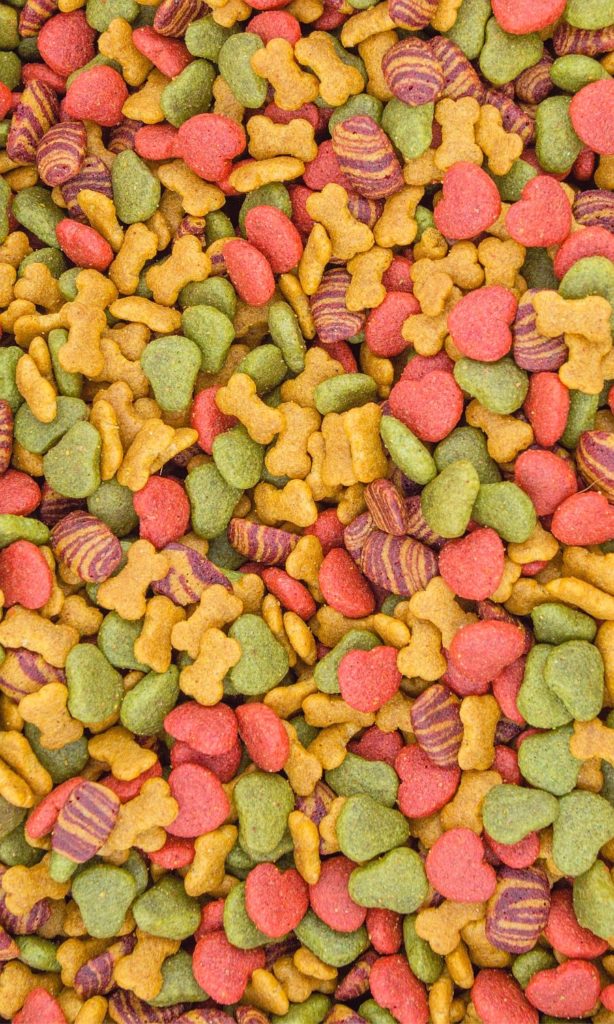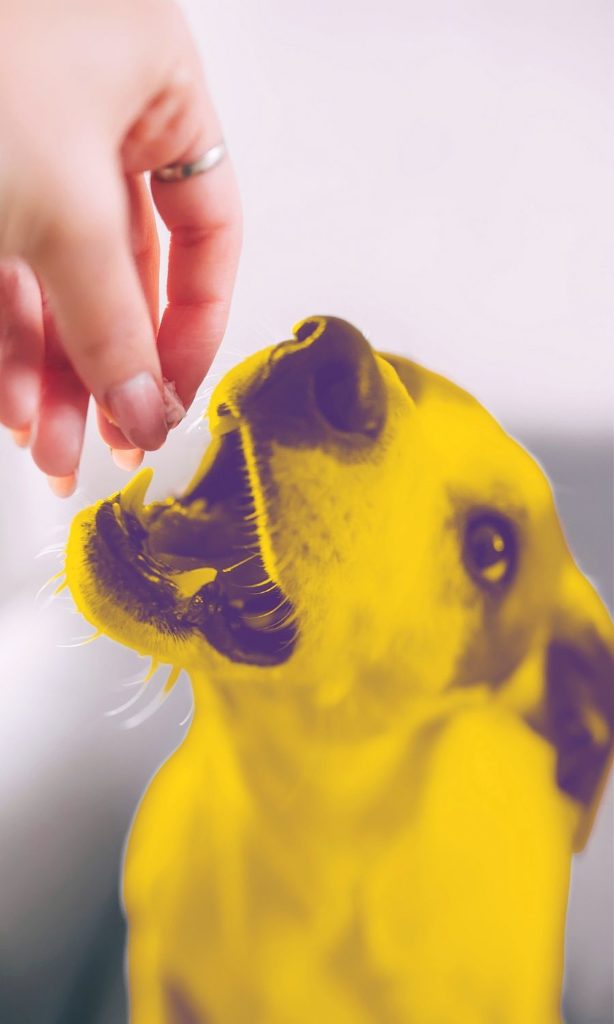Yellow 5 in dog food is a synthetic food coloring to make your dog’s food look more appetizing. This food dye is considered controversial and has no nutritional benefits for your dog.
Contents
What is Yellow 5?
Yellow 5 or Tartrazine is a synthetic lemon-yellow food coloring.
It’s derived from by-products of petroleum. Like Yellow 6, it’s a so-called azo food dye.
Unfortunately, artificial colors are common in many ultra-processed commercial dog foods, e.g ones that have a yellow, creamy to brownish color or green bits in them.

Is Yellow 5 in Dog Food Safe?
Yellow 5 is approved by several regulatory authorities. They think it’s safe when used as a food additive within allowed perimeters.
In the EU this synthetic food additive is called Tartrazine or E 102, in the USA its official name is FD&C Yellow No. 5.
Is it safe for your dog? Well…
Yellow 5 is poorly absorbed and most of it is excreted unchanged. Only small amounts get metabolized by the body or by the intestinal microflora[2].
Still, yellow 5 is one of the artificial additives associated with hypersensitivity reactions in some individuals.
Tartrazine has been reported to trigger severe allergic reactions in some people. It is banned in some countries such as Sweden, Switzerland, Norway, and Austria.
In the EU, human food with yellow 5 has to bear a warning label informing consumers that yellow 5 may cause hyperactivity in children[6]. But to be fair, the evidence for this claim is weak.
In a 2012 examination of artificial food dyes yellow 5 was contaminated with carcinogens[1]!
In a 2015 study, isolated white blood cells exposed to yellow 5 showed damage in their DNA. The researchers concluded that tartrazine may have genotoxic potential, raising safety concerns[3].
A safety evaluation by the European Food Safety Authority (EFSA) in 2015 didn’t find any genotoxic potential in rodent in vivo studies.
EFSA concluded that a maximum concentration of 520 mg/kg in complete food for dogs and a daily intake of 148 mg is safe[4].

But studies on rodents suggest that even at low doses, certain blood chemistry parameters show significant changes that could indicate negative effects on the functioning of the liver and kidneys[2].
In the US, manufacturers have to tell you on the label if they used yellow 5 in their dog food product[5]. So at least it’s easy to avoid!
Color additives like yellow 5 do not improve the nutritional quality of foods. In fact, they do absolutely nothing for your dog.
They only serve to fool the consumer into thinking a product is more attractive or appetizing than it is on its own.
Further Reading
[1] Kobylewski & Jacobson. Toxicology of food dyes. International Journal of Occupational and Environmental Health. 2012. https://doi.org/10.1179/1077352512Z.00000000034
[2] World Health Organization & Joint FAO/WHO Expert Committee on Food Additives. Evaluation of certain food additives: 82nd report of the Joint FAO/WHO Expert Committee on Food Additives. WHO Technical Report Series. 2016. https://apps.who.int/iris/handle/10665/250277
[3] Moreira Soares et al. Effects on DNA Repair in Human Lymphocytes Exposed to the Food Dye Tartrazine Yellow. Anticancer Research. 2015. http://www.ncbi.nlm.nih.gov/pubmed/25750299
[4] EFSA Panel on Additives and Products or Substances used in Animal Feed (FEEDAP). Safety and efficacy of tartrazine (E 102) for cats and dogs, ornamental fish, grain-eating ornamental birds and small rodents. EFSA Journal. 2016. https://doi.org/10.2903/j.efsa.2016.4613
[5] 21 CFR §501.22(k) on labeling of colorings in animal foods.
